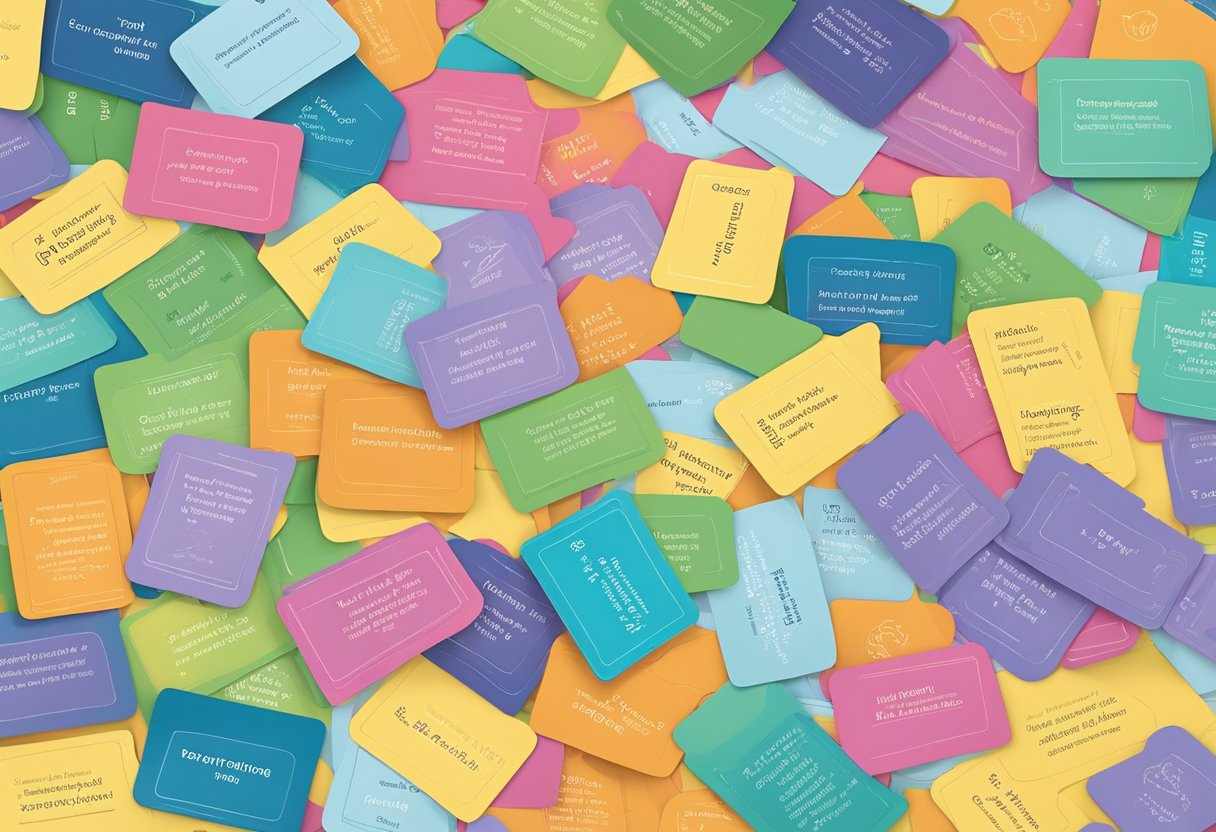Positive Discipline Parenting Tool Cards: A Comprehensive Guide

Positive discipline parenting tool cards are a helpful resource for parents who want to adopt a more positive and effective approach to discipline. These cards provide parents with practical tools and strategies to help them manage their child’s behaviour positively and constructively. The cards are designed to be easy to use and understand, making them a valuable resource for parents who are new to positive discipline.
Positive discipline parenting tool cards cover a range of topics, including communication, problem-solving, and self-regulation. Each card provides parents with a specific tool or strategy that they can use to address a particular behaviour or situation. For example, one card might provide tips on how to communicate more effectively with a child, while another might offer strategies for helping a child learn to regulate their emotions.
By using positive discipline parenting tool cards, parents can build stronger relationships with their children and help them develop the skills they need to succeed in life. These cards provide a practical and effective way for parents to implement positive discipline strategies in their daily lives, helping them to create a more positive and supportive home environment. Overall, positive discipline parenting tool cards are a valuable resource for any parent who wants to raise happy, healthy, and well-adjusted children.
Fundamentals of Positive Discipline
Key Principles
Positive discipline is a parenting approach that aims to teach children self-control, responsibility, and problem-solving skills. It is based on the idea that children learn best when they are treated with respect and given clear guidance and boundaries. Here are some key principles of positive discipline:
- Mutual respect: Positive discipline emphasizes the importance of treating children with respect and dignity. This means listening to their opinions, feelings, and concerns, and valuing their input.
- Clear expectations: Positive discipline involves setting clear expectations and boundaries for behaviour. This helps children understand what is expected of them and what the consequences will be if they do not meet those expectations.
- Consistency: Positive discipline requires consistency in both expectations and consequences. This helps children feel safe and secure, knowing what to expect from their parents.
- Positive reinforcement: Positive discipline focuses on rewarding positive behaviour, rather than punishing negative behaviour. This helps children feel good about themselves and encourages them to continue making good choices. Other ways to establish positive reinforcement can be achieved through positive affirmations, just like in our Charm Words playlist for kids.
Benefits of Positive Discipline
Positive discipline has many benefits for both children and parents. Here are some of the key benefits:
- Improved behaviour: Positive discipline can help improve children’s behaviour by teaching them problem-solving skills and encouraging them to make good choices.
- Stronger relationships: Positive discipline can help strengthen the relationship between parents and children by promoting mutual respect and open communication.
- Increased self-esteem: Positive discipline can help boost children’s self-esteem by focusing on their strengths and accomplishments, rather than their mistakes.
- Reduced stress: Positive discipline can help reduce stress for both parents and children by creating a more peaceful and harmonious home environment.
Creating Effective Tool Cards
Design Considerations
When creating positive discipline tool cards, it is important to consider the design of the cards. The cards should be visually appealing and easy to read. The font size should be large enough to read from a distance, and the colours should be bright and eye-catching. Additionally, the cards should include images or illustrations that are relevant to the discipline technique being taught.
Another important consideration is the size and shape of the cards. They should be small enough to fit in a parent’s pocket or purse, but large enough to be easily handled. The cards should also be durable and able to withstand frequent use.
Usage Guidelines
To use positive discipline tool cards effectively, parents should first familiarize themselves with the techniques presented on the cards. They should read each card carefully and practice the techniques with their children.
When using the cards with their children, parents should explain the technique and then demonstrate it. They should also encourage their children to practice the technique and provide positive feedback when they do so successfully.
It is important for parents to use the tool cards consistently and to reinforce the techniques presented on the cards. By doing so, parents can help their children develop positive behaviours and attitudes.
Implementing Discipline Strategies

Communication Techniques
Effective communication is essential when implementing discipline strategies as highlighted in Positive Parenting Tools. Positive Discipline Parenting Tool Cards encourage parents to use respectful and non-violent communication techniques when addressing misbehaviour. This includes using “I” statements to express how the behaviour affects the parent, active listening to understand the child’s perspective, and validating the child’s feelings.
Parents should also avoid using negative labels or criticism when addressing misbehaviour. Instead, they should focus on the behaviour itself and provide clear explanations of why the behaviour is not acceptable. By using positive and respectful communication techniques, parents can build a strong and trusting relationship with their children, which is essential for effective discipline.
Consistency and Follow-Through
Consistency and follow-through are crucial for effective discipline. Parents should establish clear rules and consequences and consistently enforce them. Positive Discipline Parenting Tool Cards provide a variety of discipline strategies that can be tailored to fit a child’s age and temperament.
Parents should also follow through with consequences when a child misbehaves. This means ensuring that the consequence is appropriate for the behaviour and that it is implemented consistently. It is important to remember that consequences should be designed to teach the child, not to punish them.
Consistency and follow-through are essential for building trust and respect between parents and children. By using Positive Discipline Parenting Tool Cards and implementing consistent discipline strategies, parents can create a positive and nurturing environment for their child to grow and thrive in.

